
WHEN ARCHAEOLOGIST Brian Hayden of Simon Fraser University started working at the Keatley Creek site in British Columbia more than three decades ago, he was intrigued by nine small structures that had been clearly set apart from the main settlement. Located on a terrace above the Fraser River Gorge in the traditional territory of the Ts’kw’aylaxw (pronounced Tskwai-lah) First Nation, Keatley Creek was once one of the largest prehistoric settlements in what is now Canada. As many as 1,000 residents, who survived by hunting, gathering, and fishing, lived there at its peak around 1,000 to 2,000 years ago. Millennia of occupation left behind more than 115 depressions in the main settlement, evidence of partially underground wooden dwellings called pit houses that were inhabited in the winter.
The nine structures that caught Hayden’s attention were 300 to 600 feet away from the main group. Unlike the other dwellings at the site, they had rock-lined hearths and yielded rare artifacts including gaming pieces and shells from the Pacific coast. They also were near large roasting pits measuring up to 30 feet in diameter that suggested feasting had once taken place there. After many years of research, Hayden now believes that some of these distinctive buildings were used by members of secret societies to hold ceremonies with the ultimate goal of gaining influence over their fellow villagers.
Denne historien er fra July/August 2020-utgaven av Archaeology.
Start din 7-dagers gratis prøveperiode på Magzter GOLD for å få tilgang til tusenvis av utvalgte premiumhistorier og 9000+ magasiner og aviser.
Allerede abonnent ? Logg på
Denne historien er fra July/August 2020-utgaven av Archaeology.
Start din 7-dagers gratis prøveperiode på Magzter GOLD for å få tilgang til tusenvis av utvalgte premiumhistorier og 9000+ magasiner og aviser.
Allerede abonnent? Logg på
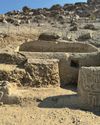
ORIGINS OF PERUVIAN RELIGION
While investigating looters' holes at the site of La Otra Banda in northern Peru's Zaña Valley, archaeologist Luis A. Muro Ynoñán of the Field Museum and the Pontifical Catholic University of Peru spotted carved blocks around seven feet below the surface.
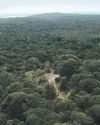
ISLAND OF FREEDOM
Many of the enslaved Africans sent to Brazil beginning in 1549 were from what is now Angola, where one of the most widely spoken languages was Kimbundu.
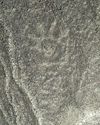
NAZCA GHOST GLYPHS
From the 1940s to the early 2000s, geoglyphs were discovered in the Nazca Desert of southern Peru depicting animals, humans, and other figures at the rate of 1.5 per year.

COLONIAL COMPANIONS
The ancestry of dogs in seventeenth-century Jamestown offers a window into social dynamics between Indigenous people and early colonists.
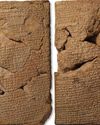
BAD MOON RISING
The British Museum houses around 130,000 clay tablets from ancient Mesopotamia written in cuneiform script between 3200 B.C. and the first century A.D.
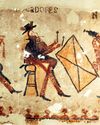
DANCING DAYS OF THE MAYA
In the mountains of Guatemala, murals depict elaborate performances combining Catholic and Indigenous traditions
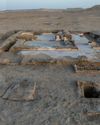
LOST GREEK TRAGEDIES REVIVED
How a scholar discovered passages from a great Athenian playwright on a discarded papyrus

Medieval England's Coveted Cargo
Archaeologists dive on a ship laden with marble bound for the kingdom's grandest cathedrals
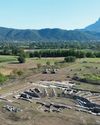
Unearthing a Forgotten Roman Town
A stretch of Italian farmland concealed one of the small cities that powered the empire
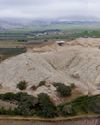
TOP 10 DISCOVERIES OF 2024
ARCHAEOLOGY magazine reveals the year's most exciting finds